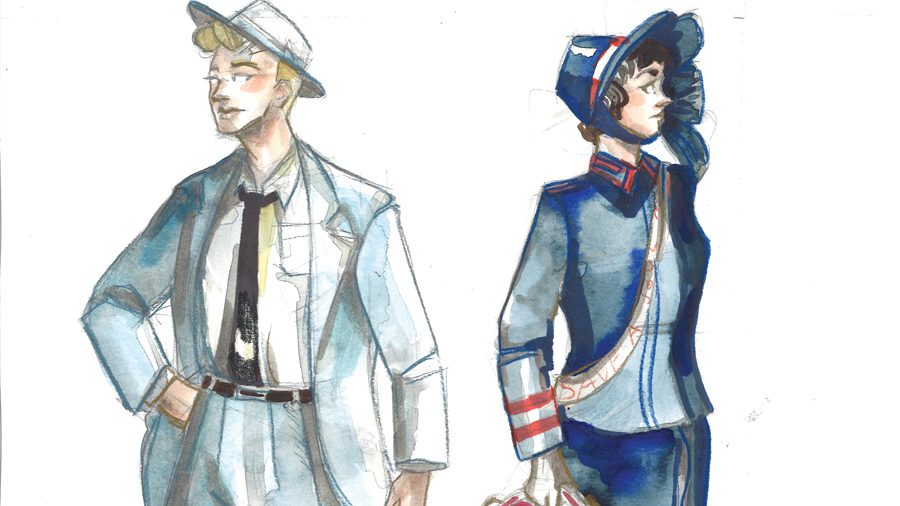Director challenges gender roles in Wirtz production of ‘Guys and Dolls’
Source: Stephanie Kulke. Illustration by Caty Buchaniec
Director Nick Bowling tries to break down gender stereotypes in his adaptation of “Guys and Dolls.”
February 14, 2019
When Nick Bowling was invited to direct the Wirtz Center for the Performing Arts production of “Guys and Dolls,” he accepted the offer with a caveat — he didn’t want to present a “standard” version of the classic musical.
Bowling’s adaptation of “Guys and Dolls,” which seeks to challenge gender roles, opens Friday at the Ethel M. Barber Theater and runs through March 3. The musical tells the story of a New York gangster who attempts to throw the biggest craps game in underground Manhattan.
Bowling said because the show is so old — it first opened on Broadway in 1950 — he ran into obstacles in his adaptation process.
“It’s a very challenging show to change because it’s so loved and because it’s such a traditional musical comedy,” Bowling said.
Bowling said the show puts the world into a binary where men are “guys” and women are “dolls.” Men drink and gamble, while the women are either “ditzes” or “prudes,” he said. By illustrating these stereotypes, Bowling said the show presents an opportunity to break them down.
Though the world of the musical is very black and white, Bowling said the characters dive into the gray area when they fall in love.
“We wanted to start in the gray areas and see what happens when you look at a world that’s less binary, which is our world today,” Bowling said.
To challenge the gender binary, Bowling cast some actors in opposite-gender roles. For example, Sky Masterson, one of the leading male roles, is played by a woman in Bowling’s production.
Communication sophomore Nolan Robinson plays one of the Hot Box Dancers, who are typically played by women. He said it has been interesting to see how Bowling has adapted the show’s technical elements to complement his unorthodox casting choices.
“The music and set have also been adjusted to fit into this world we’re creating,” he said. “There are differences we have from the original score just to put ourselves more into the world of breaking out of the binary.”
Bowling did not work alone in executing his concept. The director collaborated with Ann and Robert H. Lurie Children’s Hospital gender consultant Josephine Kearns throughout the production process. Kearns, who is a transgender woman, said she has worked in theater for 15 years, including consulting with Bowling on around 30 different shows.
“With every show I do, my goal is always to provide the best representation of diverse gender identities and sexuality that I can,” Kearns said.
Kearns said she was not very familiar with the show before working on this production, but said she believes the script and setting of “Guys and Dolls” is inherently meant to challenge gender stereotypes.
Though the play is set in a more traditional era, Kearns said many queer people could have inhabited the “underworld of New York” in the 1950s, Kearns said. She said those characters were most likely erased from the script for the contemporary audience.
“It was really exciting to put queerness back into the show in a way that it absolutely would have existed, and in a way that brings the play into a more modern world of understanding gender identities as well,” she said.
“Guys and Dolls” is the second production Bowling has directed at Northwestern. He directed “Cabaret” in 2014. He said has directed over 60 shows in the Chicago area, winning seven Jeff Awards for Outstanding Direction.
Robinson said he has enjoyed working with Bowling because he has a very specific vision that he wants to convey to the audience.
“It’s been such a fascinating experience to see how he is transforming a classic into a show that can be performed within the lens of the century we’re in,” Robinson said.
Email: [email protected]












